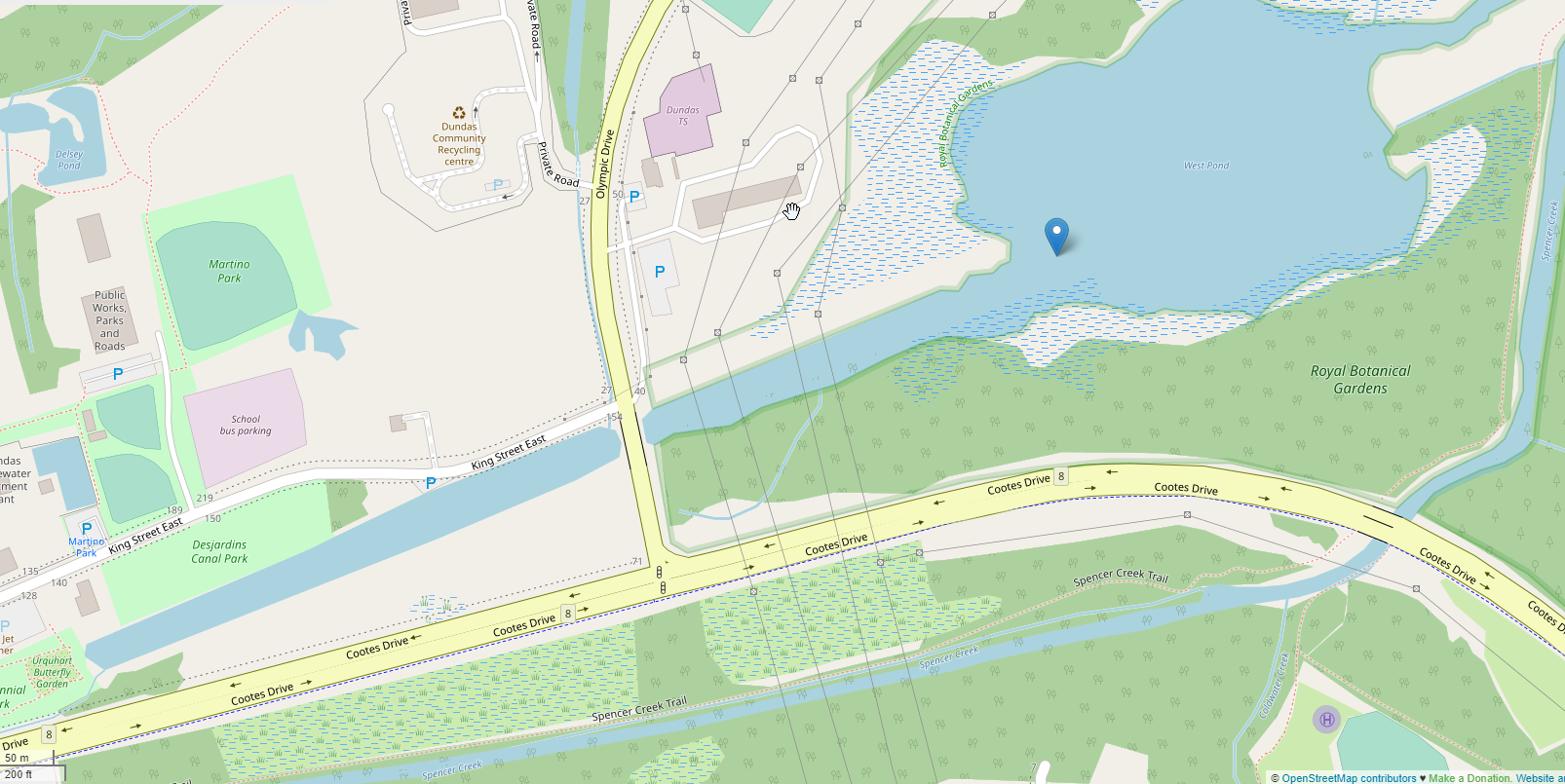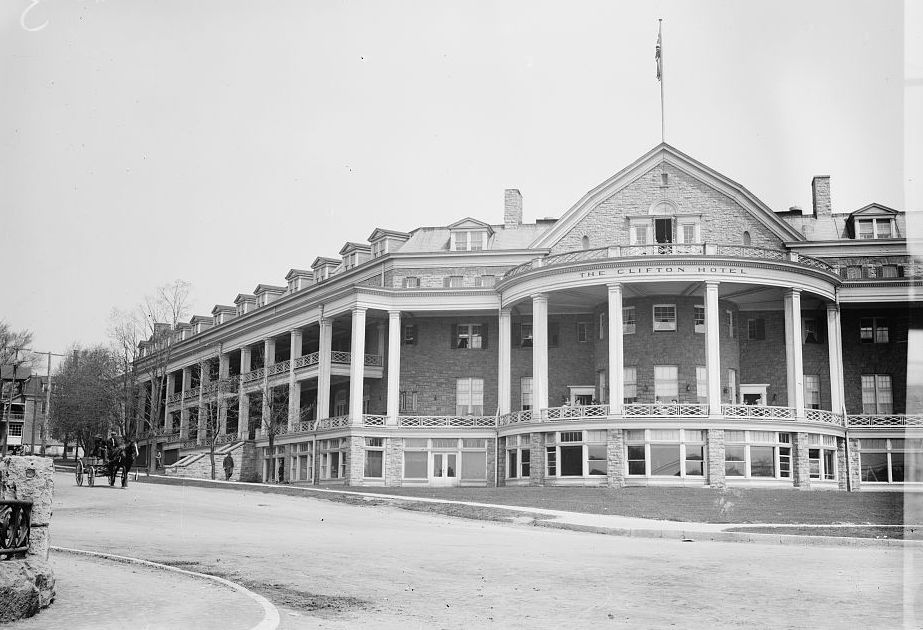|
Clifton Hill, Niagara Falls
Clifton Hill is one of the major tourist promenades in Niagara Falls, Ontario. The street, close to Niagara Falls and the Niagara River, leads from River Road on the Niagara Parkway to intersect with Victoria Avenue, and contains a number of gift shops, wax museums, haunted houses, video arcades, restaurants, hotels and themed attractions. It is a major amusement area and centre for night life, particularly for families and teenagers. Properties on Clifton Hill are bought, sold and renamed frequently. The street is dominated by two primary property owners: the Harry Oakes Company (HOCO) and the Niagara Clifton Group. Comfort Inn, also part of Clifton Hill, closed in 2015 and was later demolished as part of a major development that included the Niagara Speedway go-kart track, an extension of the Great Canadian Midway video arcade, a zombie-themed 4D ride, multiple snack stands, and a Ripley's Believe It Or Not Museum expansion. The expansion began in early 2016 and was completed ... [...More Info...] [...Related Items...] OR: [Wikipedia] [Google] [Baidu] |
Upper Canada
The Province of Upper Canada (french: link=no, province du Haut-Canada) was a part of British Canada established in 1791 by the Kingdom of Great Britain, to govern the central third of the lands in British North America, formerly part of the Province of Quebec since 1763. Upper Canada included all of modern-day Southern Ontario and all those areas of Northern Ontario in the which had formed part of New France, essentially the watersheds of the Ottawa River or Lakes Huron and Superior, excluding any lands within the watershed of Hudson Bay. The "upper" prefix in the name reflects its geographic position along the Great Lakes, mostly above the headwaters of the Saint Lawrence River, contrasted with Lower Canada (present-day Quebec) to the northeast. Upper Canada was the primary destination of Loyalist refugees and settlers from the United States after the American Revolution, who often were granted land to settle in Upper Canada. Already populated by Indigenous peoples, land ... [...More Info...] [...Related Items...] OR: [Wikipedia] [Google] [Baidu] |
Harry Oakes
Sir Harry Oakes, 1st Baronet (23 December 1874 – 7 July 1943) was a British gold mine owner, entrepreneur, investor and philanthropist. He earned his fortune in Canada and moved to the Bahamas in the 1930s for tax purposes. Though American by birth, he became a British citizen and was granted the hereditary title of baronet in 1939. Oakes was murdered in 1943 under mysterious circumstances, and the subsequent trial ended with acquittal of the accused. No further legal proceedings have taken place on the matter, the cause of death and the details surrounding it have never been entirely determined, and the case has been the subject of several books and four films. Biography Early life Oakes was born in Sangerville, Maine, one of five children of William Pitt Oakes and Edith Nancy Lewis. His father was a prosperous lawyer. Harry Oakes graduated from Foxcroft Academy and went on to Bowdoin College in 1896, and he spent two years at the Syracuse University Medical School.''Who Ki ... [...More Info...] [...Related Items...] OR: [Wikipedia] [Google] [Baidu] |
Buffalo, New York
Buffalo is the second-largest city in the U.S. state of New York (behind only New York City) and the seat of Erie County. It is at the eastern end of Lake Erie, at the head of the Niagara River, and is across the Canadian border from Southern Ontario. With a population of 278,349 according to the 2020 census, Buffalo is the 78th-largest city in the United States. The city and nearby Niagara Falls together make up the two-county Buffalo–Niagara Falls Metropolitan Statistical Area (MSA), which had an estimated population of 1.1 million in 2020, making it the 49th largest MSA in the United States. Buffalo is in Western New York, which is the largest population and economic center between Boston and Cleveland. Before the 17th century, the region was inhabited by nomadic Paleo-Indians who were succeeded by the Neutral, Erie, and Iroquois nations. In the early 17th century, the French began to explore the region. In the 18th century, Iroquois land surrounding Buffalo Creek ... [...More Info...] [...Related Items...] OR: [Wikipedia] [Google] [Baidu] |
John T
John is a common English name and surname: * John (given name) * John (surname) John may also refer to: New Testament Works * Gospel of John, a title often shortened to John * First Epistle of John, often shortened to 1 John * Second Epistle of John, often shortened to 2 John * Third Epistle of John, often shortened to 3 John People * John the Baptist (died c. AD 30), regarded as a prophet and the forerunner of Jesus Christ * John the Apostle (lived c. AD 30), one of the twelve apostles of Jesus * John the Evangelist, assigned author of the Fourth Gospel, once identified with the Apostle * John of Patmos, also known as John the Divine or John the Revelator, the author of the Book of Revelation, once identified with the Apostle * John the Presbyter, a figure either identified with or distinguished from the Apostle, the Evangelist and John of Patmos Other people with the given name Religious figures * John, father of Andrew the Apostle and Saint Peter * Pope Joh ... [...More Info...] [...Related Items...] OR: [Wikipedia] [Google] [Baidu] |
Bank Of Upper Canada
The Bank of Upper Canada was established in 1821 under a charter granted by the legislature of Upper Canada in 1819 to a group of Kingston merchants. The charter was appropriated by the more influential Executive Councillors to the Lt. Governor, the Rev. John Strachan and William Allan, and moved to Toronto. The bank was closely associated with the group that came to be known as the Family Compact, and it formed a large part of their wealth. The association with the Family Compact and its underhanded practices made Reformers, including Mackenzie, regard the Bank of Upper Canada as a prop of the government. Complaints about the bank were a staple of Reform agitation in the 1830s because of its monopoly and aggressive legal actions against debtors. History Bank of the Family Compact The first Bank of Upper Canada was located on the south-east corner of King and Frederick streets in York, Upper Canada (later Toronto, Canada West). York was then too small for a bank, and its pr ... [...More Info...] [...Related Items...] OR: [Wikipedia] [Google] [Baidu] |
Queen Victoria Park
Queen Victoria Park is the main parkland located in Niagara Falls, Ontario, Canada opposite the American and Canadian Horseshoe Falls. Established by the Niagara Falls Park Act in 1885 and opened in 1888, the park is operated by the Niagara Parks Commission and is considered the centerpiece of the Niagara Falls recreational tourist area. The park is known for its outstanding flower displays of daffodils and roses in-season, with many of the plantings done in a carpet-bedding design. Queen Victoria Park is also the focal point for the annual winter ''Festival of Lights''. History Prior to 1888 The area comprising Queen Victoria Park was originally part of the upper Niagara River bed. Father Louis Hennepin is purported to be the first visitor to explore the area in depth in 1678.Plaques & Markers [...More Info...] [...Related Items...] OR: [Wikipedia] [Google] [Baidu] |
Desjardins Canal
The Desjardins Canal, named after its promoter Pierre Desjardins, was built to give Dundas, Ontario, easier access to Lake Ontario and the Great Lakes system of North America. Although a technological achievement and a short term commercial success, the canal was soon eclipsed by the railway, and Dundas by neighbouring Hamilton. History Context Following the US Revolutionary War the British government felt an urgent need to populate the interior of the province of Upper Canada. The immediate concern was to find a refuge for Loyalists forced from their previous homes in the United States. After the early settlement of Kingston and the lower St. Lawrence River, and the establishment of Butler's Rangers and others in the Niagara peninsula, the possibility also existed for Loyalist communities at the head of Lake Ontario. Another priority was the need to accelerate the settlement of the unoccupied areas in western Upper Canada to provide a buffer zone between that province and the U ... [...More Info...] [...Related Items...] OR: [Wikipedia] [Google] [Baidu] |
Clifton Hotel (Canada)
The Clifton Hotel was a historic hotel in Niagara Falls, Ontario, Canada. It was the site of the 1914 Niagara Falls Peace Conference. It burned down on December 31, 1932. History The Clifton Hotel was last owned by "Clifton Hotel Company, Ltd.", a subsidiary of Niagara Falls businessman Frank A. Dudley's United Hotels Company of America until it was destroyed by fire on December 31, 1932. At the time of the fire, the site had been home to hotels for more than a century, including a previous Clifton Hotel that was also lost to a fire in 1898. The loss in 1933 was estimated at $1 million (). Harry Oakes, a mining millionaire bought the property and presented it to the Niagara Parks Commission. Oakes Garden Theater was built on the site and opened in September 1937, as part of a plan to beautify the entrance into Canada at the Honeymoon Bridge. Significance The hotel was the site of the 1914 Niagara Falls Peace Conference. In addition, the hotel hosted the King George V and ... [...More Info...] [...Related Items...] OR: [Wikipedia] [Google] [Baidu] |
Niagara Gorge
Niagara Gorge is an long canyon carved by the Niagara River along the Canada–United States border, between the U.S. state of New York and the Canadian province of Ontario. It begins at the base of Niagara Falls and ends downriver at the edge of the geological formation known as the Niagara Escarpment near Queenston, Ontario, where the falls originated about 12,500 years ago. The position of the falls has receded upstream toward Lake Erie because of the falling waters' slow erosion of the riverbed's hard Lockport dolomite (a form of limestone that is the surface rock of the escarpment), combined with rapid erosion of the relatively soft layers beneath it. This erosion has created the gorge. The force of the river current in the gorge is one of the most powerful in the world; because of the dangers this presents, kayaking the gorge has generally been prohibited. On multiple occasions, the rapids of the gorge have claimed the lives of people attempting to run them. However ... [...More Info...] [...Related Items...] OR: [Wikipedia] [Google] [Baidu] |
Niagara Falls Suspension Bridge
The Niagara Falls Suspension Bridge stood from 1855 to 1897 across the Niagara River and was the world's first working railway suspension bridge. It spanned and stood downstream of Niagara Falls, where it connected Niagara Falls, Ontario to Niagara Falls, New York. Trains used the upper of its two decks, while pedestrians and carriages used the lower. The bridge was the idea of Canadian politicians, and it was built by an American company and a Canadian company. It was most commonly called the Suspension Bridge, although other names included Niagara Railway Suspension Bridge, Niagara Suspension Bridge, and its official American name of the International Suspension Bridge. The bridge was part of Canadian politician William Hamilton Merritt's vision to promote trade within his country and with its neighbor the United States. Many argued that a suspension bridge could not support the safe passage of trains, including bridge builders. Nonetheless, the bridge companies hired Char ... [...More Info...] [...Related Items...] OR: [Wikipedia] [Google] [Baidu] |






.jpg)